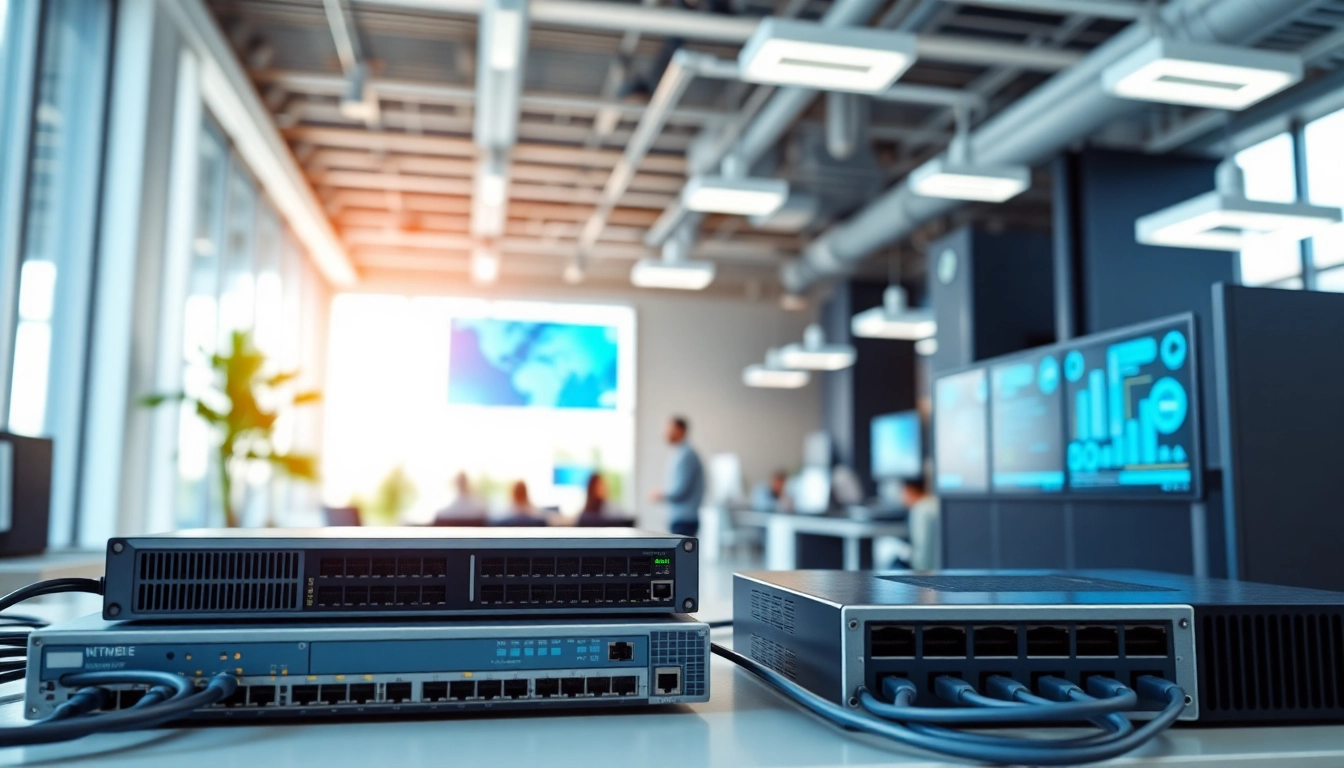
What Is Network Infrastructure?
Network infrastructure forms the backbone of modern communication systems, providing the necessary hardware, software, and protocols that enable data exchange and connectivity between devices within any environment, be it a corporate office or home network. With the rapid advancements in technology, understanding the fundamentals of network infrastructure is crucial for businesses looking to improve efficiency, scalability, and security.
Defining Network Infrastructure
Network infrastructure encompasses all the physical and virtual resources that support network operations, which include routers, switches, firewalls, cabling, and various protocols. These components work together to ensure seamless connectivity and communication between users, devices, and applications. The term also covers the architecture and services that facilitate the management and maintenance of these components, making it a broad and essential area within IT.
Core Components of Network Infrastructure
At its core, network infrastructure can be divided into three main categories: hardware, software, and physical components. Each plays an integral role in creating a robust network ecosystem that meets the demands of its users. Understanding these components helps in assessing the readiness of a network to handle current and future requirements.
Key Components of Network Infrastructure
Networking Hardware: Routers, Switches, and Firewalls
Networking hardware is the tangible equipment that enables data traffic to flow across a network. This includes:
- Routers: Devices that route data packets between different networks, acting as a gateway between them.
- Switches: These connect devices within the same network, managing data packets to ensure efficient communication between endpoints.
- Firewalls: Security systems designed to monitor and control incoming and outgoing network traffic based on predetermined security rules. Firewalls can be both hardware and software-based.
Networking Software: Protocols and Applications
Networking software includes the programs and protocols necessary for device communication and data transfer. Key concepts include:
- Protocols: Sets of rules that govern how data is transmitted. Prominent examples are TCP/IP, HTTP, and FTP.
- Applications: Software that runs on the network, supporting tasks such as email, file sharing, and video conferencing.
Physical Infrastructure: Cables and Connectors
The physical infrastructure of a network involves the cabling and connectors that physically link devices. Common materials include:
- Ethernet Cables: Used to connect devices to a local network. Variants include Cat5, Cat6, and fiber optic cables.
- Connectors: Devices that physically connect cables to one another or to networking devices, ensuring proper alignment and continuity.
Benefits of Robust Network Infrastructure
Enhanced Connectivity and Communication
A strong network infrastructure facilitates faster and more reliable communication within an organization. Enhanced connectivity allows for real-time data sharing, increasing productivity and enabling collaboration among teams regardless of location. For instance, companies utilizing cloud services benefit from improved access to shared resources, contributing to a more agile work environment.
Improved Security Measures
With an increasing number of cyber threats, investing in a robust network infrastructure includes deploying advanced security features. Properly configured firewalls, intrusion detection systems, and secure protocols help protect sensitive information. Regular updates and patches ensure systems are fortified against potential vulnerabilities, contributing to overall business resilience.
Cost-Effective Solutions for Scalability
A well-designed network infrastructure is scalable, allowing organizations to add or remove components as necessary without excessive costs. This flexibility enables businesses to handle peak loads more efficiently, ensuring resources align with demand. Additionally, a solid infrastructure can reduce operational costs by optimizing resource usage and minimizing downtime.
Common Challenges in Network Infrastructure
Identifying Vulnerabilities and Risks
Recognizing vulnerabilities within a network can be challenging due to the complexity and interdependence of various components. Regular audits and vulnerability assessments should be conducted to identify and mitigate risks promptly. Failure to address these risks can lead to significant financial and reputational damage.
Managing Legacy Systems
Many organizations continue to rely on legacy systems, which can hinder innovation and integration with new technologies. Transitioning to modern solutions necessitates careful planning, including phased rollouts and training programs for staff to adapt to new systems.
Understanding Compliance Requirements
Compliance with regulations such as GDPR or HIPAA is crucial for businesses that handle sensitive data. Organizations need to stay informed about the relevant laws and ensure their network infrastructure complies with prescribed measures to avoid legal complications.
Best Practices for Implementing Network Infrastructure
Assessing Needs and Planning
Establishing a successful network infrastructure begins with a thorough needs assessment. Organizations should evaluate their current systems, identify gaps, and define future requirements based on growth projections, technological advancements, and changing business needs.
Choosing the Right Technology
Technology selection is crucial in building a scalable and secure network. Decision-makers should consider factors such as compatibility, vendor support, and cost when evaluating potential solutions. Involving IT personnel in the selection process ensures chosen tools align with organizational goals.
Continuous Monitoring and Upgrades
Improving and maintaining network performance requires ongoing monitoring and regular upgrades. Implementing network performance management tools can provide insights into traffic patterns, enabling proactive measures to prevent bottlenecks and downtime. Additionally, staying updated with the latest technologies and protocols will help ensure the network infrastructure remains secure and efficient.






